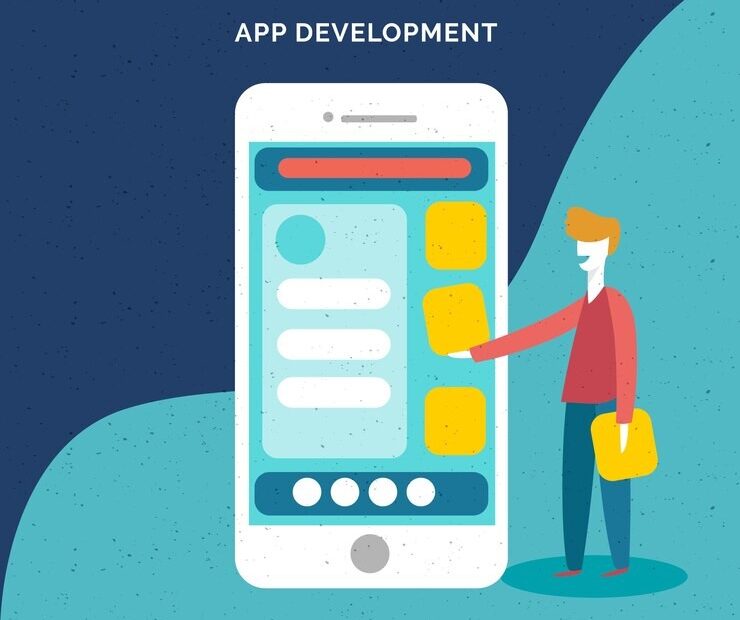In today’s digital age, mobile apps have become an integral part of our daily lives. From social networking and entertainment to productivity and health, there’s an app for almost everything. If you’ve ever thought about creating your own mobile app but didn’t know where to start, this guide is for you. We’ll walk you through the process of developing your first mobile app, covering everything from idea conception to launching your app on the app stores.
Enozom is a premier software development company specializing in the creation of high-quality, user-centric mobile applications. They provide a comprehensive suite of services designed to help clients navigate the complex process of mobile app development, from initial concept to final launch. With a team of skilled developers, designers, and project managers, Enozom ensures that every app they create is not only technically robust but also tailored to meet the specific needs and goals of their clients.
Step 1: Define Your Idea
The first step in developing a mobile app is to have a clear idea of what you want to create. Consider the following questions:
- What problem does your app solve? Identify a specific issue or need that your app will address.
- Who is your target audience? Understand who will benefit from your app and tailor your features to meet their needs.
- What are the core features of your app? Focus on the essential functionalities that will make your app useful and attractive to users.
Step 2: Research the Market
Before diving into development, it’s important to research the market to ensure there’s a demand for your app. Analyze similar apps and take note of their strengths and weaknesses. This will help you identify opportunities to improve upon existing solutions and make your app stand out.
Step 3: Create a Wireframe and Storyboard
A wireframe is a visual guide that outlines the structure and layout of your app. It doesn’t need to be detailed, but it should give you a clear idea of how your app will look and function. A storyboard complements the wireframe by mapping out the user journey through your app, illustrating how users will navigate from one screen to another.
Step 4: Design the User Interface (UI)
The design of your app is crucial to its success. A well designed app is intuitive, easy to use, and visually appealing. Focus on creating a clean and simple UI that enhances the user experience. Consider hiring a professional designer if you’re not confident in your design skills.
Step 5: Choose Your Development Approach
There are several approaches to developing a mobile app, each with its own pros and cons:
- Native Development: Building your app specifically for a particular platform (iOS or Android) using platform-specific languages and tools. This approach offers the best performance and user experience but requires separate development for each platform.
- Cross Platform Development: Using frameworks like React Native or Flutter to create apps that work on both iOS and Android. This approach can save time and resources but may not offer the same level of performance as native apps.
- Web Based Apps: Developing a mobile-friendly website that can be accessed from any device. This approach is the most cost-effective but may lack the features and performance of native apps.
Step 6: Develop the App
Once you have your design and development approach in place, it’s time to start building your app. This step involves:
- Setting up the development environment: Install the necessary tools and software for your chosen platform or framework.
- Writing the code: Implement the features and functionalities defined in your wireframe and storyboard.
- Testing the app: Regularly test your app to identify and fix bugs, ensure compatibility with different devices, and improve performance.
Step 7: Prepare for Launch
Before launching your app, you’ll need to:
- Create an App Store Developer Account: Register with the Apple App Store and/or Google Play Store to distribute your app.
- Prepare App Store Listings: Write compelling descriptions, create eye-catching screenshots, and gather any other assets required for your app’s store listing.
- Beta Testing: Release your app to a small group of users for feedback and further testing. This can help identify any final issues and ensure your app is ready for a wider audience.
Step 8: Launch and Promote Your App
With everything in place, it’s time to launch your app. Submit your app to the app stores and await approval. Once approved, your app will be available for download.
Promoting your app is crucial to gaining visibility and attracting users. Utilize social media, create a website or landing page, reach out to influencers, and consider running ads to spread the word about your app.
Conclusion
Developing your first mobile app can be a rewarding experience, allowing you to bring your ideas to life and potentially reach millions of users. By following these steps and remaining dedicated to your vision, you’ll be well on your way to creating a successful mobile app. Remember, the key to success lies in thorough planning, continuous learning, and staying adaptable to new challenges. Good luck!
